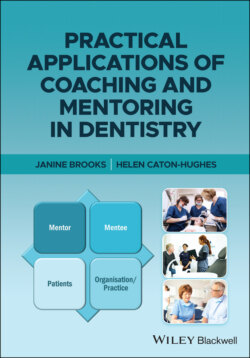Читать книгу Practical Applications of Coaching and Mentoring in Dentistry - Janine Brooks - Страница 33
Matching Mentor and Mentee
ОглавлениеSome organisations set up formal schemes for mentoring; others encourage informal matching methods. Networking and word of mouth can lead to successful mentoring relationships. Suggested matching criteria are given in the table below:
Table 2.1 Matching criteria and the issues they raise.
| Criteria | Issue(s) raised |
|---|---|
| Power over mentee | The power relationship between mentor and mentee should not be too close. The mentor should not be the mentee's line manager. A mentor more than two levels above the mentee constitutes a power distance in which the mentee may feel uncomfortable. |
| Compatibility between the needs of the mentee and experience of the mentor | Most important criterion. Getting on ‘like a house on fire’ not necessarily desirable or effective. Harmony and ability to address the mentee's needs are both important. |
| Diversity issues, including age, gender, and ethnicity | Identify relevant dimensions and express preferences on them. |
| An indication of interest | The relationship needs sustained commitment over time, from both parties. |
| Geography and location | Methods of contact (e.g. face‐to‐face, telephone, email). Regularity of contact. Agreements and sanctions (e.g. failure to attend). |
| Personality | Avoid ‘impossible’ matches. Avoid matching very similar people. |
